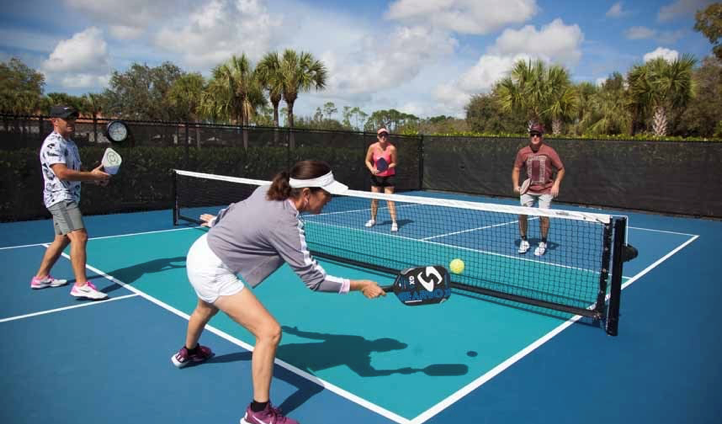
Pickleball has gained immense popularity in recent years, drawing players of all ages and abilities. Whether you’re a homeowner association (HOA) developing a community court or a public facility catering to pickleball enthusiasts, ensuring accessibility is paramount. Embracing the Americans with Disabilities Act (ADA) guidelines not only promotes inclusivity but also aligns with local building codes, creating a welcoming space for everyone.
Inclusivity and Health Benefits:
Pickleball stands out not only for its simplicity and affordability but also for the inclusive environment it fosters. This sport encourages not only physical activity but also social interaction, making it a healthy and enjoyable choice for players of all backgrounds. The sport’s adaptability allows for individual improvement, the development of fundamentals, and the enhancement of technique, creating endless opportunities for personal growth.
The Importance of Inclusivity for ADA Individuals:
What makes pickleball truly exceptional is its commitment to inclusivity. The ease of learning and playing the game, coupled with its social nature, makes it a perfect avenue for individuals with varying physical abilities. The sport’s adaptability caters to the needs of those seeking a less strenuous environment, making it an ideal choice for those with different abilities. The pickleball community is open, welcoming, and embraces diversity, ensuring that everyone, including ADA individuals, can participate and thrive in this engaging sport
Why ADA Compliance Matters:
The ADA sets forth comprehensive guidelines to make facilities accessible for individuals with disabilities. When it comes to indoor pickleball courts, adopting these standards ensures that everyone, regardless of their physical abilities, can enjoy the game. From accessible parking spaces to clear pathways, ADA compliance enhances the overall user experience, promoting inclusivity and community engagement.
HOA Responsibilities:
For HOAs developing pickleball courts within residential communities, adherence to ADA guidelines is not just a legal requirement but also a commitment to fostering a sense of community for all residents. Designated accessible parking spaces, wheelchair-friendly paths, and inclusive seating arrangements demonstrate a commitment to inclusivity, creating a space where everyone can participate in the joy of pickleball.
Public Facilities and Local Building Codes:
Public pickleball courts face a similar imperative to comply with ADA guidelines, but local building codes also play a crucial role. These codes are designed to ensure the safety and accessibility of structures within a community. Local building codes must align with ADA requirements, and facility developers should work closely with regulatory bodies to guarantee full compliance. This collaboration ensures that every aspect of the facility, from court layout to restroom accessibility, meets the highest standards of inclusivity and safety.
Navigating the Requirements:
Creating an ADA-compliant pickleball facility involves meticulous attention to detail. The facility’s entrance, pathways, court layout, seating, restrooms, signage, lighting, and communication features must all be designed with accessibility in mind. Engaging with professionals who specialize in ADA compliance during the planning and construction phases can streamline the process and guarantee that every requirement is met.
The Ripple Effect of Inclusivity:
An ADA-compliant pickleball court not only fulfills legal obligations but also contributes to a more vibrant and connected community. Inclusivity fosters a sense of belonging, bringing people together to enjoy a shared passion for the game. Whether within an HOA or a public facility, adopting these standards ensures that everyone, regardless of physical ability, can participate and create lasting memories on the pickleball court.
Conclusion:
As the popularity of pickleball continues to soar, it is essential for HOAs and public facilities to prioritize ADA compliance. By embracing these guidelines, communities not only adhere to legal requirements but also create spaces that reflect a commitment to inclusivity and accessibility. Working hand-in-hand with local building codes, developers can guarantee that every aspect of their indoor pickleball court aligns with the highest standards, making the game enjoyable for everyone. Ultimately, an ADA-compliant pickleball facility isn’t just a space to play; it’s a testament to the power of community and the importance of ensuring that every member can join in the fun

Recent Comments